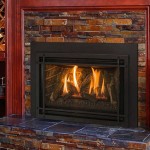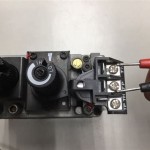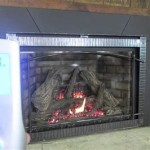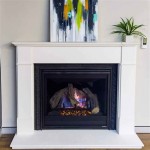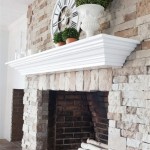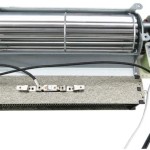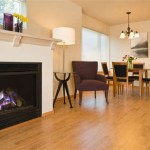Standalone Fireplace: A Versatile Heating and Aesthetic Solution
Standalone fireplaces, also known as freestanding fireplaces, represent a compelling alternative to traditional built-in units. These self-contained heating appliances offer flexibility in placement, ease of installation, and a diverse range of aesthetic styles, making them suitable for various residential and commercial environments. This article will delve into the key characteristics, advantages, and considerations surrounding standalone fireplaces.
The core functionality of a standalone fireplace remains consistent with other fireplace designs: generating heat through the combustion of fuel. However, the defining feature is its independent structure, allowing it to be positioned virtually anywhere within a room, provided the necessary venting requirements are met. This contrasts sharply with built-in fireplaces, which are integrated directly into a wall or structure during construction or renovation.
The appeal of standalone fireplaces extends beyond their mobility. They are available in a wide array of materials, finishes, and styles, ranging from rustic cast iron stoves to sleek, modern designs featuring glass and stainless steel. This versatility allows homeowners and designers to select a unit that seamlessly complements their existing decor or serves as a focal point in a room.
Placement Flexibility and Installation Considerations
One of the most significant advantages of a standalone fireplace is its placement flexibility. Unlike built-in units, which require significant structural modifications, standalone fireplaces can be installed in existing rooms with minimal disruption. This makes them an attractive option for homeowners looking to add supplemental heat to a specific area without undertaking a major renovation project.
However, this flexibility is contingent upon proper venting. All fireplaces, regardless of their type, require a flue or chimney to safely exhaust combustion byproducts. For standalone fireplaces, this typically involves connecting the unit to an existing chimney or installing a new venting system that extends through the roof or an exterior wall. The specific venting requirements vary depending on the fuel type and the manufacturer's specifications.
Installation also involves adhering to safety clearances. Standalone fireplaces generate significant heat, and it is crucial to maintain a minimum distance between the unit and combustible materials, such as furniture, curtains, and wood paneling. These clearances are clearly outlined in the manufacturer's instructions and must be strictly followed to prevent fire hazards. Local building codes may also impose additional requirements regarding placement and installation.
Professional installation is often recommended, particularly for gas or propane-fueled units. A qualified technician can ensure proper venting, gas line connections, and adherence to safety regulations. While some homeowners may choose to install wood-burning standalone fireplaces themselves, understanding and complying with all applicable codes and safety precautions is paramount.
Diverse Fuel Options and Efficiency
Standalone fireplaces offer a variety of fuel options, each with its own set of advantages and disadvantages. The most common fuel types include wood, gas (natural gas or propane), and electricity. The choice of fuel largely depends on personal preferences, budget, and access to resources.
Wood-burning standalone fireplaces provide a classic, traditional aesthetic and the satisfying crackle and aroma of burning wood. They are a renewable fuel source, although sourcing and storing firewood can be labor-intensive. Wood-burning units also tend to have lower efficiency ratings compared to gas or electric models, and they require more frequent cleaning and maintenance.
Gas-fueled standalone fireplaces offer greater convenience and control. They ignite instantly with the flip of a switch, and the heat output can be easily adjusted. Gas fireplaces also produce fewer emissions than wood-burning units and require less maintenance. However, they require a gas line connection, which may necessitate professional installation and ongoing utility costs.
Electric standalone fireplaces are the easiest to install, as they simply plug into a standard electrical outlet. They produce no emissions and require no venting, making them suitable for apartments or homes where venting is not feasible. Electric fireplaces typically use a heating element to generate heat and often incorporate realistic flame effects to simulate the appearance of a real fire. While they are convenient and relatively inexpensive to operate, they may not provide the same level of warmth as wood or gas fireplaces, particularly in larger rooms.
Energy efficiency is a crucial consideration when choosing a standalone fireplace. Higher efficiency ratings translate to lower fuel consumption and reduced heating costs. Gas fireplaces typically have the highest efficiency ratings, followed by electric and wood-burning models. Factors such as insulation, venting design, and the presence of features like thermostatic controls can also influence a fireplace's overall efficiency.
Aesthetic Versatility and Design Integration
Beyond their functional benefits, standalone fireplaces serve as significant design elements, contributing to the overall aesthetic of a room. The wide range of styles, materials, and finishes available allows homeowners to select a unit that complements their existing decor or creates a striking visual statement.
Rustic cast iron stoves evoke a sense of warmth and tradition, often featuring intricate detailing and a durable construction. These stoves are well-suited for country homes, cabins, or spaces with a vintage-inspired aesthetic. The patina and character of cast iron can add a touch of authenticity and charm to any room.
Modern standalone fireplaces typically feature clean lines, minimalist designs, and contemporary materials like glass, stainless steel, and concrete. These units often incorporate features such as linear burners, remote controls, and integrated lighting, creating a sophisticated and technologically advanced ambiance. They are ideal for modern homes, lofts, or spaces with a minimalist aesthetic.
Other design options include freestanding fireplaces with stone veneers, tile surrounds, or custom-built mantels. These features allow for greater personalization and integration with the surrounding decor. Homeowners can coordinate the fireplace's materials and finishes with existing furniture, flooring, and wall colors to create a cohesive and visually appealing space. The design of the venting system can also be integrated into the overall aesthetic, with options for exposed metal flues or concealed venting systems.
The size and scale of the standalone fireplace should also be carefully considered in relation to the size of the room. A large, imposing fireplace may overwhelm a small space, while a smaller unit may get lost in a larger room. It is important to choose a fireplace that is proportionate to the room and positioned in a way that maximizes its visual impact.
Ultimately, the aesthetic versatility of standalone fireplaces allows homeowners to create a unique and inviting atmosphere that reflects their personal style and enhances the overall design of their home. By carefully considering the available options and integrating the fireplace seamlessly into the existing decor, it can become a cherished focal point that provides both warmth and visual appeal.

Hail The Queen Of Hygge Midcentury Modern Freestanding Fireplace Ashley Claire Real Estate Benchmark Realty

I Love This Fireplace Modern Freestanding Design

Studio 2 Freestanding Wood Burning Stove Stovax Stoves

15 Hanging And Freestanding Fireplaces To Keep You Warm This Winter Decoist

Gas Fireplace Stand Alone 75x65 Curve Ortal Usa Contemporary Closed Hearth Floor Mounted

Ortal Stand Alone Collection Luxury Fires Robey S

Contemporary Stand Alone Gas Fireplaces Solid Fuel Stove Free Standing Hampshire Stan Freestanding Fireplace Home

Freestanding Gas Fireplaces Fergus Fireplace

How To Install A Freestanding Fireplace 5 Easy Steps L Esseiale

Freestanding Stoves Vs Fireplace Inserts Royal Oak Mi Fireside Hearth
Related Posts

